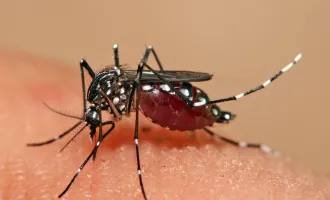This Date in UCSF History: Doctors Cry Foul
Originally published in Synapse — The UCSF Student Newspaper on October 9, 1980. In San Francisco there is one physician per 192 people — compared to a national average of one per 700 — yet areas of the city have been designated by the federal government as medically underserved. Community physicians repeated this statement with awe at a Town and Gown forum hosted by the San Francisco Medical Society (SFMS) last week.
All areas east of Dolores Street are considered medically needy and UCSF has received federal funding to establish the Southeast San Francisco Area Health Education Center (AHEC).
Dr. Malcolm Watts, Associate Dean in the UCSF School of Medicine insisted that the purpose of AHECs is education, but San Francisco practitioners think that the program is one of several UCSF plans to intrude into the dwindling San Francisco patient marketplace.
San Francisco physicians claim that other UCSF and university affiliated programs compete with them for patients.
These include the San Francisco Outpatient Improvement Programs, Inc. which operates SFGH Satellite Health Clinics; the proposed San Francisco Family Health Programs, Inc. which may establish three clinics in southeast San Francisco; and the General Internal Medicine Program, a newly reorganized department of the medical school supported by a grant from the Robert Wood Johnson Foundation.
Dr. Watts reassured community physicians at the medical society meeting (which drew a record attendance) that the purpose of AHECs is to bring medically underserved areas into the medical education mainstream by funding health professional students to train in these areas.
According to Dr. Watts, AHECs are not patient service centers, but designed to train medical students and residents in primary care medicine. In other areas of California, such as Fresno and Santa Rosa, AHECs have been used to fund training in existing hospitals and clinics.
Dr. Robert Crede, Associate Dean in the UCSF medical school argued that the threat of competition for patients of primary care practitioners was greater in 1966 when the Ambulatory and Community Medicine department was established, rather than under its current reorganization to General Internal Medicine.
This program will establish group practices at the UCSF medicine primary care clinics to provide continuous 24-hour patient coverage. It is projected that patient visits to the general medical clinics will increase from 21,000 in 1978-79 to 39,000 by 1984-85.
It was obvious during the meeting's question-answer session that San Francisco physicians associate the UCSF programs with other threatening intrusions into traditional private-practice-oriented medicine such as HMO's and government controls.
Dr. Thomas McDermott of SFMS asked Dr. Watts, “Do we really have nothing to fear?”
Dr. Watts concluded that what San Francisco needs is more patients. Relations between SFMS and UCSF have always been strained.
An SFMS forerunner, the San Francisco Benevolent Medical Society, was founded to lend prestige to the practices of its members who were not part of the faculty of Toland University, UCSF's predecessor.
One very important relationship between UCSF and community physicians is the donation of teaching time by many San Francisco practitioners as members of the university's clinical faculty.
Members of the clinical faculty are required to give 50 hours of teaching to medical students and house staff to maintain their appointments. -Several times calls for mass resignation of the clinical faculty to demonstrate opposition to the UCSF programs brought applause from the audience last week.
Dr. Nancy Bohannon of SFMS and Dr. Kenneth Woeber, UCSF faculty from Mt. Zion, wondered why UCSF won't use already established patient care services such as private offices and hospital based clinics for teaching, rather than developing new patient services. University representatives did not respond.
Other related issues were raised by community physicians. Many felt that increased fees from patient services are stimulating UCSF program development into the primaiy care marketplace.
Dr. Julius Krevans, Dean of the UCSF School of Medicine, contended that the university receives most of its faculty funding from research grants and the state. Other community physicians asked why UCSF is expanding teaching of medical students when there is a predicted doctor glut by the 1990’s.
Dr. Eugenio Zarate of SFMS said that patients will suffer by so many forms of medical practice developing in the patient marketplace. He felt that patients may be pressured to receive medical care in settings other than private practice, which was defended by SFMS representatives as superior.
Dr. Krevans proposed the formation of a Liaison Committee composed of executives of UCSF, SFMS and the Clinical Faculty Association to coordinate programs of UCSF and the San Francisco medical community.
The meeting was closed by Medical Society president Dr. David Sachs assured members that this was a good faith effort by the university and the community to resolve their differences.



